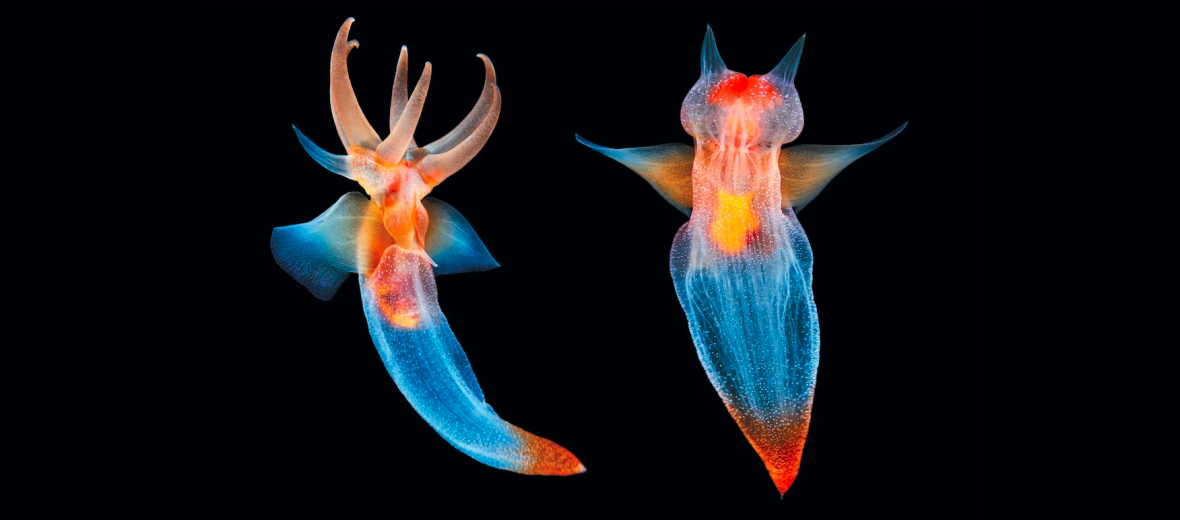
The sea angel, aka sea butterfly, is in a large group of diminutive, free-swimming sea slugs. They are classified into 6 different families. They may resemble them, but don’t confuse them with Cnidarians (jellyfish and the like). These critters are open ocean opisthobranchs (gastropods). Sea angels can be found throughout the world’s oceans, from the frigid polar regions to the warm tropical regions. They are not currently evaluated by the IUCN.
First the Stats…
Scientific name: Gymnosomata
Length: Up to 1.97 inches
Lifespan: Up to 2 years
Now on to the Facts!
1.) Fossils date back to the Middle Frasnian stage of the Late Devonian period.
2.) Their foot has developed into wing-like flapping appendages (called parapodia).
3.) The scientific name hails from the Greek language and translates to Gymnos, meaning naked, and soma meaning body.
4.) Having a low aspect ratio helps them to accelerate quickly in the water column.
5.) Sea angels are gelatinous.
But wait, there’s more on the sea angel!
6.) These little creatures are carnivorous (eat meat) and only feast upon their fellow pteropods (sea butterflies).
7.) Larval sea angels lose their embryonic shells a few days after hatching.
Did you know…?
By flapping their “wings” they swim at the blinding speed of up to .22 mph. Who needs to rush around, right?
8.) They defend themselves by synthesizing a previously unknown noxious molecule called pteroenone. This causes would-be predators to avoid eating the sea angel.
9.) There is a species of amphipod that will grab a sea angel and carry it around for protection.
10.) Their hunting strategy varies per species. Some actively hunt down prey, while others are ambush predators.
But wait, there’s still more on the sea angel!
11.) Sea angels are simultaneous hermaphrodites (possess both male and female reproductive organs) with internal fertilization.
12.) A fertilized sea angel will later release a gelatinous egg mass, then the eggs float freely until hatching.
Now a Short Sea Angel Video!
Be sure to share & comment below! Also, check out the Critter Science YouTube channel. Videos added regularly!
Want to suggest a critter for me to write about? Let me know here.
Photo credit: Alexander Semenov



